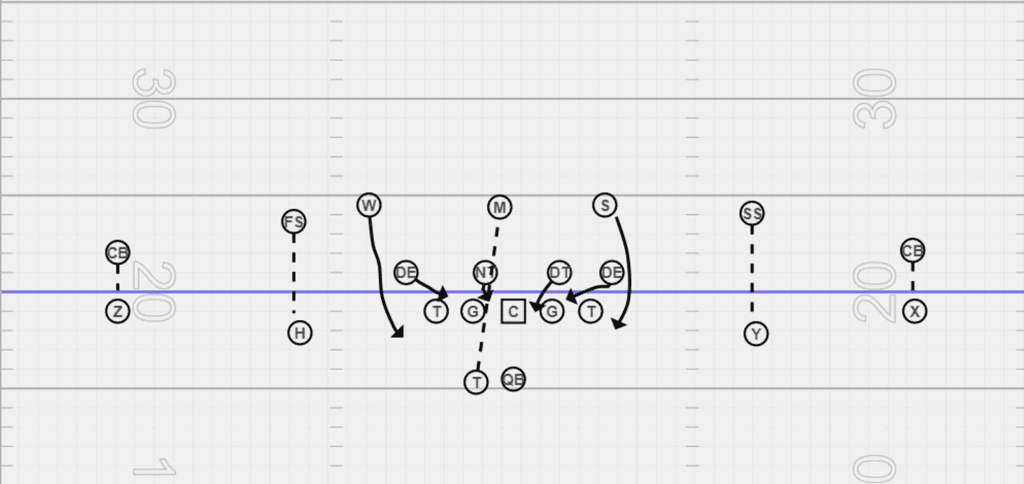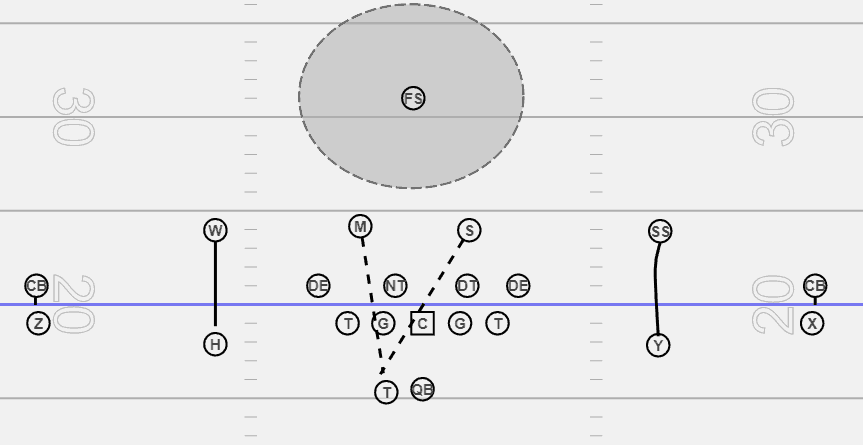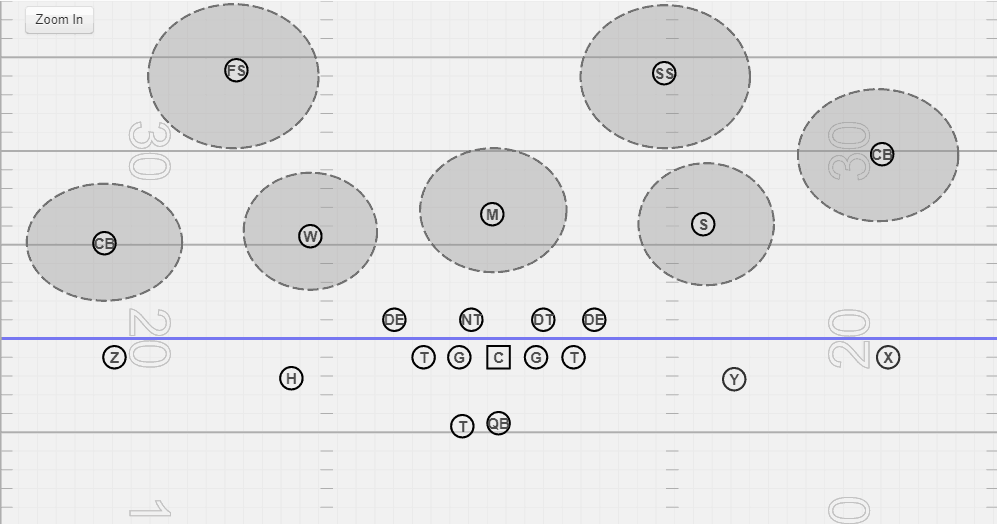Pass coverage is essential in today's game of football. Offensive coaches are finding innovative ways to spread the ball around the field. The key is to play sound pass coverage.
What is pass coverage? Pass Coverage is being able to cover receivers in all areas of the field, while they attempt to get open and catch the football.
Let's dig into what all of the coverages are, and coaches are implemented to stop passing offenses. We're going to highlight 5 coverages
The way we like to teach coverages here at vIQtory is by the number of "deep defenders". If the coverage is cover 3, there are 3 deep defenders. Cover 2, two deep defenders and so on.
Cover 0
Deep Defenders: 0

The cover 0 defense is often called behind a blitz (a 6 man pressure). Teams will rush 6 defenders and cover the 5 eligible receivers man to man. We often seen a heavy dose of press man coverage coupled with cover 0.
Teams do this to muddle up the wide receivers and get to the quarterback as soon as possible.
Cover 1
Deep Defenders: 1

Cover 1 is similar to cover 0, although instead of bringing a blitz ( 6 man pressure), the defense will bring a dog (5 man pressure).
Defenses can also double team wide receivers with cover 1, as they have an extra defender (when running a 4-man front).
Cover 2
Deep Defenders: 2

Cover 2 is the first zone coverage in our series of zone coverages. Whereas cover 1 has one deep defender with man coverage underneath, cover 2 has two deep defenders and all the underneath defenders are playing zone.
Cover 2 is useful to defend against teams that like to throw crossing routes or short routes. It does however, put a tremendous amount of stress on the deep defenders. Ultimately the 2 deep defenders are responsible for splitting the field in half. Each defender must cover 26.6 yards each. That's a lot!
Cover 3
Deep Defenders: 3

Cover 3 is the most balanced zone coverage as it has 3 deep defenders and 4 underneath defenders. The deep defenders are now splitting the field into thirds. Adding a third person to the mix now cuts the field to cover by 17.76 Yards for each deep defender to cover.
Underneath, the field is often split into 2 different zones on each side of the football:
Hook/Curl
Flats
Cover 4
Deep Defenders: 4

Also known as umbrella coverage, cover 4 has 4 deep defenders which are splitting the field into 13.325 yards.
Cover 4's weakness, however, is the underneath coverage.
Similar to how we broke down the cover 3 deep defenders, cover 4 relies on 3 underneath defenders to cover 17.76 yards each.
Typically the underneath defenders will cover 3 specific areas
True Middle of the field
Flats
Coaches however have gotten creative over the years with showing a cover 4, influencing flat routes and using the corners to rob underneath routes.
Cover 6

We've covered the types of man coverage, now let's look at a different type of zone coverage. The Cover 6 defense is another type of zone defensive scheme. It is similar to the Cover-2, Cover-3, and Cover-4 defensive looks but differs in a key way; it is not obvious what Cover-6 means.
The Deep Coverage
We can see that it carries elements of both a Cover-4 and a Cover-2 scheme. On one side of the field, we see the Cornerback dropping back to take 1/4 of the deep field with the safety on that side taking the next 1/4. This leaves the other safety left the responsibility of handling the other 1/2 of the deep field.
It is reasonable to expect that the cornerback who drops deep is doing so on the same side which there is a nickel, or slot, corner. This is because this defensive back is more adept at covering the boundary zone than a linebacker is.
The Underneath Coverage
With one cornerback dropping deep downfield to take a 1/4, the underneath coverage has to rotate to fill this gap. Since we now know the corner that rolls deep is typically on the same side as the nickel corner, we assume that the nickel corner will move to the boundary.
The remaining linebacker core and other cornerbacks essentially drop into a zone where they are. As shown in the image above, this results in about each player owning 1/4 of the underneath field. The responsibilities underneath look very similar to a Cover-3 defense.
Strengths/Weaknesses
The strengths and weaknesses come from who is on the field at the time this defense is called. A nickel package vs. a 4-3 (or even a dime package) will dictate the speed and coverage skills on the players on the field. An offense could look to exploit a linebacker (as opposed to a corner) dropping all the way to the boundary. On the flip side, the offense may look to run the ball toward the nickel corner side if they favor that matchup over going toward a linebacker instead.
Zone defense is prone to a play-action play. If either safety or the corner with deep 1/4 responsibility bites on a fake, it can leave a huge opening for the offense to exploit. Like any defense, Cover 6 should be used as part of a mix of looks to confuse an offense and not necessarily used as the base scheme.